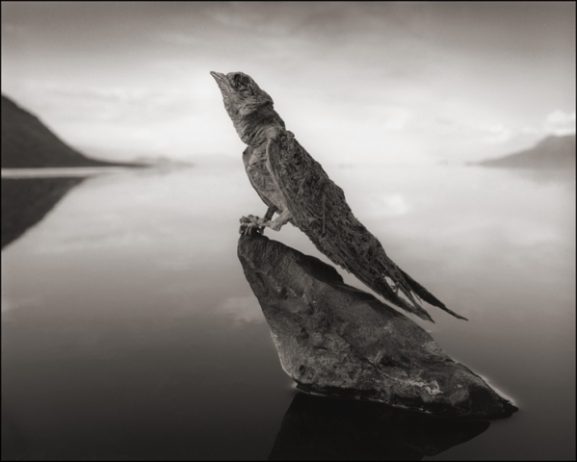Deadly Lake Water Turns Birds Into Stone. Tanzania’s Lake Natron actually a mix of chemicals and it contains mainly sodium bicarbonate (baking soda) and sodium carbonate decahydrate (soda ash). Lake Natron is fed by mineral hot springs and a river, but no water flows out except through evaporation. The results are totally havoc and the caustic waters create deadly outcomes.
 2. Calcified Fish Eagle
2. Calcified Fish Eagle
It may look like this bird was gripped by the icy hand of death, but actually, it was calcified in the caustic waters of Tanzania’s Lake Natron. They unexpectedly found the creatures all manner of birds and bats washed up along the shoreline of Lake Natron in Northern Tanzania.No one knows exactly how they die, but it appears that the extreme reflective nature of the lake’s surface confuses them, and like birds crashing into plate glass windows, they crash into the lake.
The water has a tremendously high soda and salt content, the soda and salt cause the creatures to calcify, perfectly preserved, as they dry. Across The ravaged land is to give these clearly lifeless creatures an air of reanimation.












